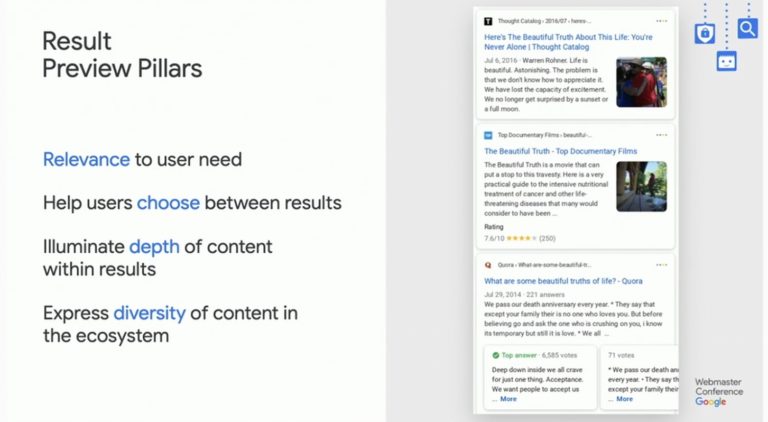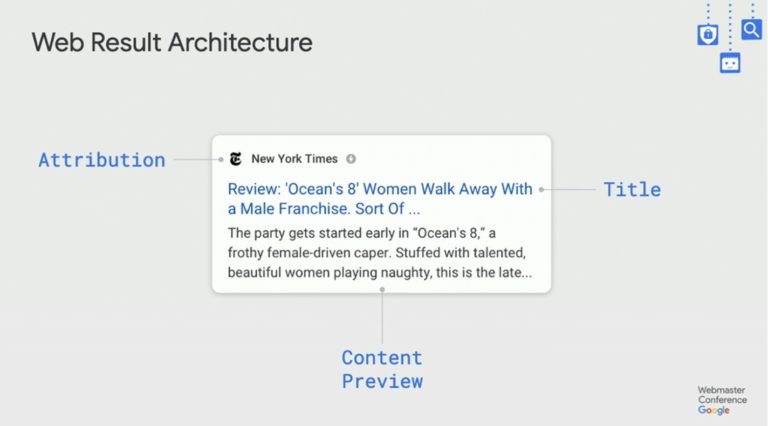
The Evolution of Search Result Previews
The Evolution of Search Result Previews, Google explains the guiding principles behind search result previews that took the results page from 10 blue links to where we are today.
This was explained by Phiroze Parakh, software engineer at Google, at Google’s Webmaster Conference last November.
Google recently uploaded a batch of videos from the conference, so for most people this is their first time seeing it.
Here’s a recap of Parakh‘s presentation on titles, snippets, and result reviews.
The Four Pillars of Result Previews
The main task a user has after landing on a search result page is to find the content they need.
Result previews previews help them do that. Although they weren’t always as useful as they are now.
Previously, in the world of 10 blue links, all the information a user had to go on was a title, a snippet, and a URL.
In an effort to make result previews more helpful, Google came up with four “core pillars”.
- The primary goal is relevance to the user need, because previews need to be relevant to the query.
- Second goal is to make sure the preview helps users make a choice between which result to click on.
- A third goal is to illuminate the depth of content within websites
- The fourth goal/pillar is content diversity.

Reimagining Result Previews
When reimagining what a result preview should look like, all Google had to work with was the name of the site, the title of the page, and a content preview.

Google came up with different ways to algorithmically generate result previews based on the four pillars described in the section above.
Rewriting Snippets
First, Google started to change the snippet in response to the query.
The same algorithm that decides if a page is relevant to a query can be used to decide what part of the page should be relevant for the user.
That means, if the query was changed, the snippet displayed would also be different.
Read more: searchenginejournal



